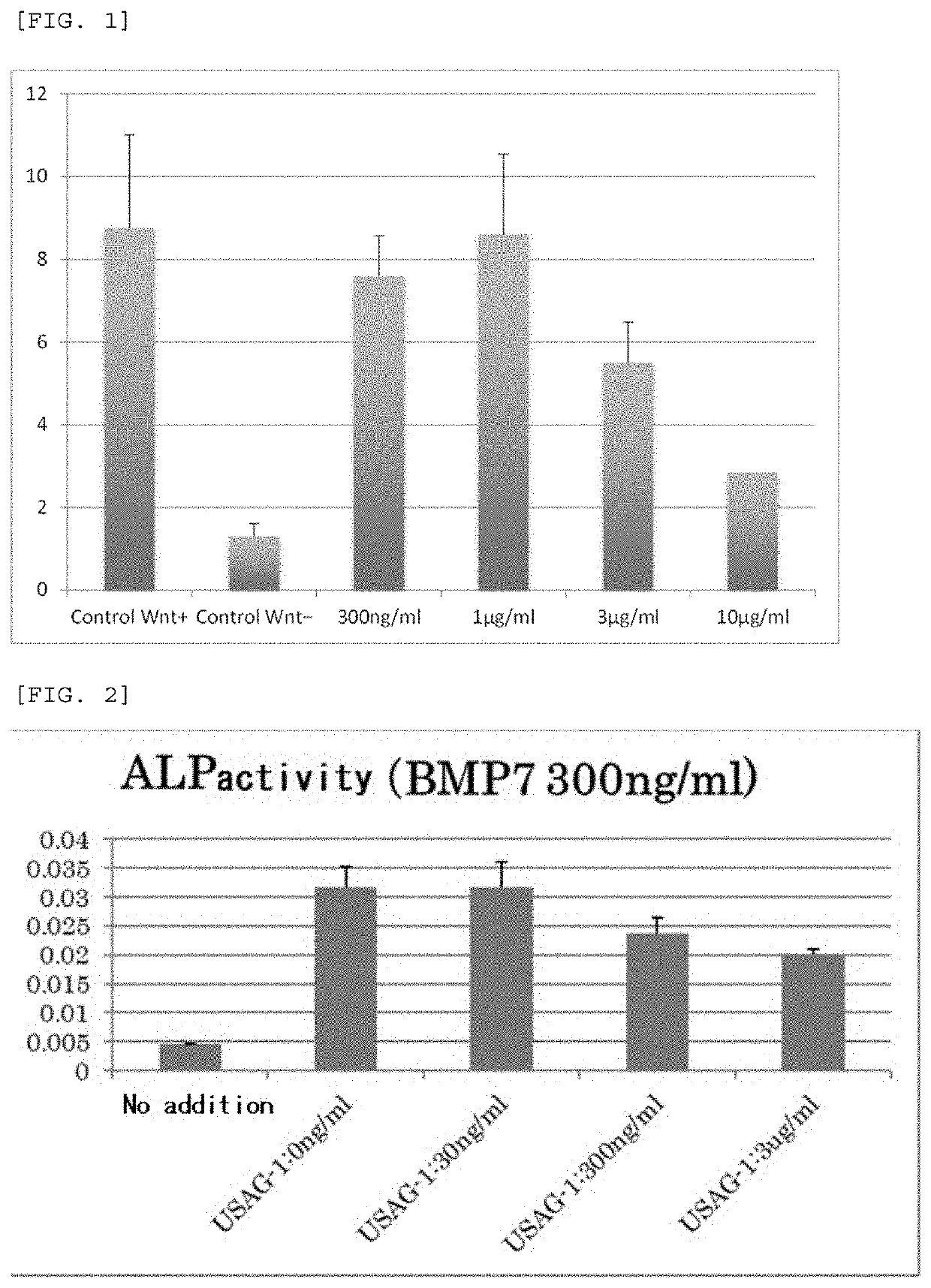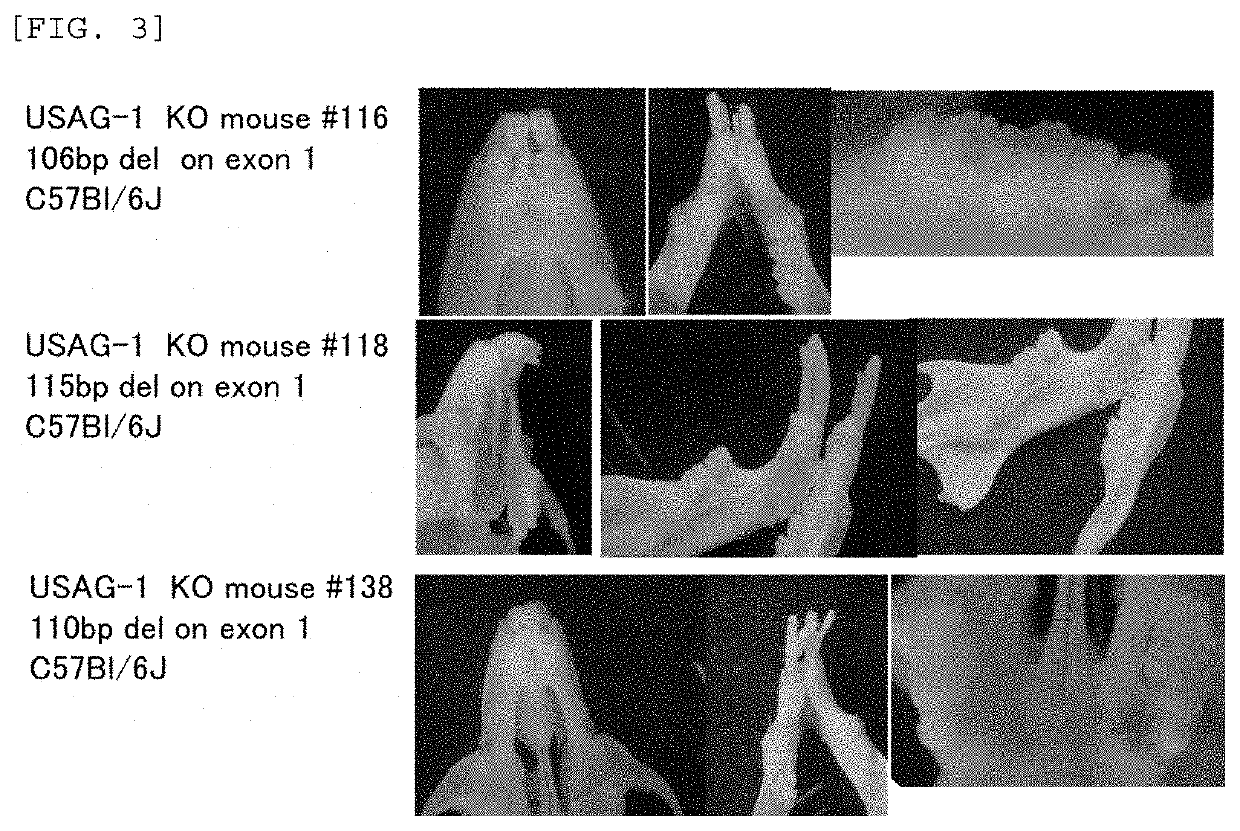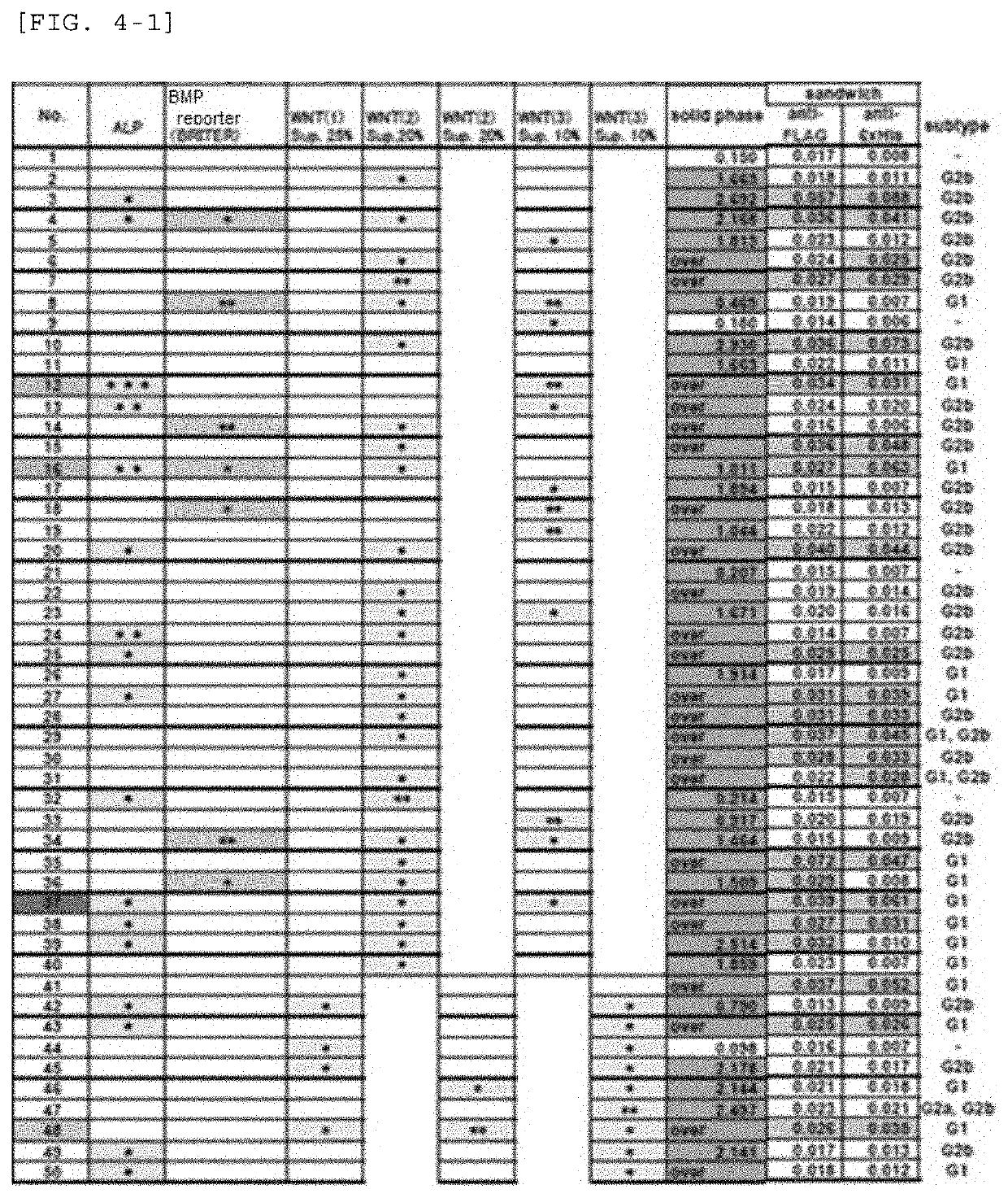Neutralizing Antibody for Tooth Regeneration Treatment Targeting USAG-1 Molecule
a technology of neutrophilizing antibody and molecule, which is applied in the direction of prosthesis, drug composition, peptide, etc., can solve the problems of no fundamental treatment method and tissue engineering approaches that have not reached clinical application
- Summary
- Abstract
- Description
- Claims
- Application Information
AI Technical Summary
Benefits of technology
Problems solved by technology
Method used
Image
Examples
example 1
Preparation of Antibody 1
[0132]For preparation of mouse USAG-1 neutralizing antibodies, a human USAG-1 protein derived from an Escherichia coli expression system (R & D systems) was used as an antigen. In a Wnt reporter assay using HEK293 cells, the Wnt inhibitory activity of the Escherichia coli expression system-derived human USAG-1 protein was confirmed (FIG. 1). In an ALP assay with addition of BMP7 using C2C12 cells, the BMP inhibitory activity of the Escherichia coli expression system-derived human USAG-1 protein was confirmed (FIG. 2). For preparation of mouse USAG-1 neutralizing antibodies, three lines of supernumerary tooth model mice, USAG-1KO mice (#116, #118, #138) were newly established using CRISPR-CAS9 (FIG. 3). The neutralizing antibodies were prepared using USAG-1 KO (#116) mice by an iliac lymph node method in ITM Co., Ltd.
[0133]Primary screening of 284 wells was performed by ELISA using the immunizing antigen, and a large number of positive wells were found (FIG. ...
example 2
[0137]A mouse USAG-1 (WISE) recombinant protein with a PA tag added to the N-terminal was transiently expressed in Expi293F cells, and a stable expression line was established. Affinity purification was performed using a PA tag system to obtain 0.2 mg of PA-mUSAG-1 (WISE) from 150 mL of a culture supernatant (FIG. 5). The purified PA-mUSAG-1 (WISE) protein was shown to have a molecular weight of about 28 kDa, which is close to the theoretical value (24 kDa), by electrophoresis under reduction (R) and non-reduction (NR). The N-terminal PA-tagged mouse USAG-1 (WISE) protein derived from the mammalian cell Expi293F cell expression system showed dose-dependent WNT signaling inhibitory activity in the WNT reporter assay (FIG. 6) and dose-dependent BMP signaling inhibitory activity in the BMP ALP assay (FIG. 7). The mouse USAG-1 protein whose activity was confirmed was used to confirm the neutralizing activity of 5 mouse anti-USAG-1 neutralizing antibodies (E12,...
example 3
In Vivo Administration Test of Antibody—1
[0139]A congenital tooth agenesis model mouse with homozygous EDA-deficiency has high loss (about 90%) of a mandibular third molar (M3). A single dose of the mouse anti-USAG-1 neutralizing antibody A (E37) was intraperitoneally administered to mother mice pregnant with congenital tooth agenesis model mouse due to EDA deficiency. As a result, loss of the mandibular third molar (M3) was recovered in 7 out of 8 born EDA-deficient mice (FIG. 10). No supernumerary tooth was observed in the congenital tooth agenesis model mouse with EDA deficiency to which the mouse anti-USAG-1 neutralizing antibody A was administered. Therefore, it was found that the antibody A can recover a missing tooth. Here, the term “recovery” means that a born EDA-deficient mouse has a tooth at the site (does not lose M3) where a tooth is normally lost in an EDA-deficient mouse.
PUM
| Property | Measurement | Unit |
|---|---|---|
| molecular weight | aaaaa | aaaaa |
| time | aaaaa | aaaaa |
| alkaline phosphatase) | aaaaa | aaaaa |
Abstract
Description
Claims
Application Information
 Login to View More
Login to View More - R&D
- Intellectual Property
- Life Sciences
- Materials
- Tech Scout
- Unparalleled Data Quality
- Higher Quality Content
- 60% Fewer Hallucinations
Browse by: Latest US Patents, China's latest patents, Technical Efficacy Thesaurus, Application Domain, Technology Topic, Popular Technical Reports.
© 2025 PatSnap. All rights reserved.Legal|Privacy policy|Modern Slavery Act Transparency Statement|Sitemap|About US| Contact US: help@patsnap.com



